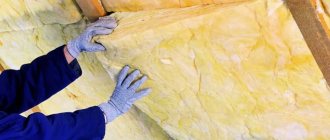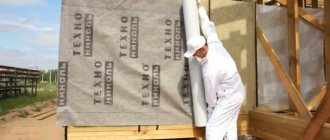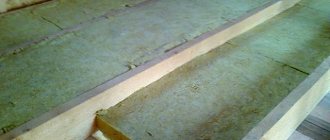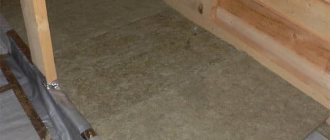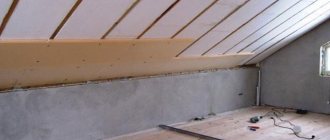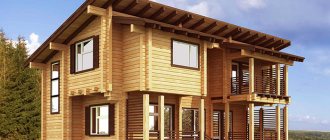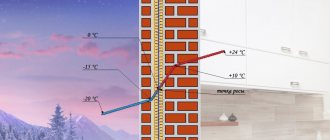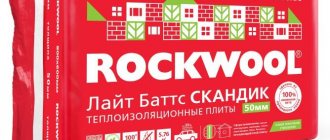- December 19, 2019
- Construction
- Lyudmila Storozhenko
Rodents can damage the insulation layer, which will lead to the need to redo the repair. In thermal insulation, these pests can gnaw passages, making their nests here. Stopping rodents is difficult. To avoid such troubles, you need to find out at the planning stage of repairs or construction which insulation is not chewed by mice and rats. Also, the thermal insulation layer can be additionally protected from pest attacks.
The essence of the problem
If you are planning to build your own home in an area where there may be rodent pests, you need to find out which insulation is not chewed by mice and rats. They can penetrate inside the thermal insulation even through small cracks. Therefore, you will never guess where there is a weak spot in the finish. It will be extremely difficult to drive away uninvited guests, as they will like to live in safe, warm material. It will be necessary to carry out a major overhaul of the finishing.
It is worth noting that rodents do not feed on thermal insulation. They just chew it up. This sad fate can befall not only soft materials, but also hard types of finishing, for example, those made from heat-insulating dry building mixtures. In such layers, rodents make holes and gnaw tunnels. This greatly increases heat loss in the house. You will have to spend a lot of money on heating.
Incorrect thermal insulation characteristics lead to condensation and the development of fungus. Due to dampness, the structure will collapse, and an unhealthy microclimate will be established in the premises.
It is worth considering that most modern insulating materials do not create a reliable barrier against rodent attacks. Therefore, the choice of thermal insulation must be approached responsibly. There are materials in which rodents will never breed. And even if you don't want to use such insulation, there are ways to prevent pest attacks.
Study
The answer to the question about thermal insulators that repel rodents is impossible without market research. In total, it contains two types of heat insulators - organic and artificial.
Organic insulators are made from recycled or natural materials. They contain a minimum of chemical additives - only substances that resist fire. The main examples are ecowool, reed, straw, etc.
There are many more inorganic or artificial heat insulators. And if natural ones are produced, as a rule, in bulk or in slabs, then this category has more formats: slab mineral or basalt wool and loose perlite. You can opt for solid aerated concrete. Next we will talk about reliability indicators in relation to rodents.
Features of suitable thermal insulation
When studying which insulation rodents do not live in, it is worth noting that all such types of thermal insulation differ in certain qualities. Mice and rats like to live in low-density materials, as they are easier to chew through. Rodents love warmth and dryness.
When studying which insulation does not harbor mice, it is worth noting that some modern materials are made from organic substances. Such substances can serve mice not only as a cozy home, but also as an excellent lunch. In this case, they will not only gnaw through the material, but will also greatly reproduce in it.
It is better to choose hard, rigid materials for insulation that are not easy to chew through. This, for example, could be foam blocks.
Mice avoid materials soaked in special antiseptic solutions. But you shouldn’t get carried away with such substances. The concentration must correspond to the standard established by the manufacturer. Otherwise, the antiseptic may negatively affect people's health. Thermal insulation impregnated with an antiseptic is installed only on the outside of the house.
Bulk insulation will also save you from rodent infestations. It is impossible to create nests in such materials. Therefore, many owners use expanded clay as insulation. Mice and rats never breed in it.
How to protect the thermal insulation circuit from damage
If you got a house with a ready-made thermal insulation layer, or the mouse population suddenly began to increase, you need to take measures to protect the insulation. Otherwise, within a couple of years, heat loss will increase, and with it, heating bills will increase.
Any gaps in the casing will be used against you!
There are several options here that I would recommend implementing comprehensively:
- We protect all thermal insulation layers with dense material, preferably one that is too tough for a rodent.
- We fill the cavities and discovered passages with broken glass, wood shavings soaked in copper sulfate, or push glass wool.
- We store all food products and seed in a place inaccessible to mice. No food means no incentive to gnaw and seriously settle down in the insulated walls.
- We place poison behind the casing and in the corners, and install ultrasonic devices that repel rodents.
Well, and the most effective method, which, in addition to getting rid of rodents, has a bunch of other useful effects. Finally, get a normal cat, and every morning you will find several gray carcasses on the porch. Sooner or later the mice will run out and your insulation will be safe.
The owner, he was the one chewing the foam!
The cat, however, will stay and ask for food, but it seems to me that this is a completely acceptable price for peace and order in the house.
Rodents' favorite insulation materials
Considering the classification of thermal insulation materials, it should be noted that there are a number of varieties that should not be purchased for insulation. There is a high risk of mice infestation when using the following materials:
- Mineral wool.
- Polystyrene foam and polystyrene foam (all foam-based materials).
- MDF, fiberboard, OSB.
Mice and rats especially love polystyrene foam. It is always dry and warm, it is soft, and it is easy to create moves in it. Therefore, the insulation for the house - penoplex - is destroyed by mice by 80% in just 2-3 years after repair. This is also true for denser varieties of artificial materials. For example, a similar fate awaits penoizol, dense varieties of polystyrene foam, and expanded polyurethane foam. They are also susceptible to pest attacks. They are also soft and retain the shape of the tunnels created by pests. Mice do not eat artificial materials, but they are very easy to chew through.
Basalt and mineral wool, for example, the popular Isover insulation, also cannot withstand the attack of rodents. You can also gnaw tunnels here. The type of mineral wool does not matter. Pests destroy any of them quickly. It could even be glass wool, basalt slabs, etc. Therefore, Isover insulation is quite suitable for a city apartment, but not for a private house in an area where there are rodents.
Pests also chew through slabs made from wood waste. They don't eat them, but just chew them. Mice eat sawdust, straw, and other natural materials without adhesive fillers. Because of this, the house will become an attractive place for overwintering hordes of rodents.
What is basalt wool?
Basalt wool is a high-density insulation material; it has replaced the impractical and traumatic glass wool. At the moment, sales of this particular insulation are in first place, accounting for 80% of the total sales of mineral wool. Basalt mineral wool contains the finest elastic fibers, which are obtained by melting and rapid cooling. As a result, stone fibers are formed.
Important! In the production of stone mineral (basalt) wool, rocks are used. This is what makes it possible to achieve high quality and long service life.
- Mineral wool is used to insulate any buildings and structures.
- Can be used on ceiling, floor, walls, roof.
- The material is environmentally friendly, so it can be successfully used in premises of any purpose.
- For seamless insulation, blown-type basalt insulation is used, which has high technical performance.
Ecowool
Having considered the characteristics of thermal insulation materials that attract rodents, you can understand which materials should not be used during repair and construction work.
One of the possible options is ecowool. Rodents do not live in it, although the material belongs to the cotton wool group. The basis of this material is formed by cellulose. The material does not burn and does not emit toxins. This is not only durable insulation with high thermal insulation properties, but also excellent sound insulation. Condensation does not accumulate in ecowool.
The material is applied to the surface using pneumatic tools or manually. Therefore, the cost of such finishing is quite high. The material should dry at normal humidity for 3-4 days.
Ecowool repels mice and rats due to its special composition, which includes brown salts and high concentration boric acid. These substances are safe for human health, but they are dangerous substances for rodents. Also, fungus will not appear in ecowool and pathogenic microorganisms will not develop.
Foam glass
Wall insulation - foam glass - is also not eaten by mice and rats. They do not live in this material, so it is actively used in areas where there is a high probability of pest attacks. The material is made from waste from the glass industry. Broken fragments are crushed and mixed with coke and anthracite.
The material is fired at high temperatures. It can be sold in the form of bulk insulation or slabs. Foam glass is not afraid of moisture and does not lose its qualities even after getting wet. Temperature changes are also not a problem for this insulation. The service life is about 100 years.
Inorganic thermal insulation materials are heavy and expensive. To use such thermal insulation for a private house, you need to plan this at the construction stage. Foam glass makes the structure of the building heavier, so the foundation must be stronger.
The high cost is due to the long service life. Rodents, mold and bacteria do not live in the material. Foam glass is an abrasive material, so pests simply cannot handle it. They cannot live in either loose or tiled varieties of this thermal insulation. Therefore, the high cost of the material is completely justified.
Protection against mice and rats entering the house.
What are mice and rats capable of?
Rats and mice can:
- Climb into the house using plants, trees, vines, plants, electrical wires, ropes. Climb to any height along vertical walls made of wood, brick, concrete, plastic. Crawl through pipelines, cable ducts, ventilation pipes, underground communications inputs (through gaps ). Rats are capable of: crawling into cracks of at least 1.3 cm, climbing outside vertical pipes with a diameter of up to 7.6 cm, climbing inside pipes or gaps ranging from 3.8 to 10.2 cm, burrowing to a depth of 90 cm, swimming in water at a distance of up to 800 m, jump up or in length by 33 cm. Mice are capable of: crawling through holes with a diameter of up to 6 mm, jumping to a height of 46 cm, surviving and reproducing at temperatures down to – 4C.
Standard entry points for mice and rats into the house.
Inputs of water, gas, electricity lines into the house, ventilation openings not protected by mesh, cracks in walls, vents in foundations, gaps at the joints of structures, ventilation gaps in roofing systems, sewer pipes, chimneys and chimney penetrations through walls and roofs, open entrances doors and windows, ventilation gaps of ventilated facades,
The best method of protecting your home from rodents is to create physical barriers to prevent rodents from entering your home and its structures. The additional cost of designing and installing mouse protection will be less expensive than repairing the damage caused by mice.
Ill. No. 3. Methods of mechanical protection of the house from the penetration of mice and rats.
To protect openings and ventilation gaps (in the roof, under ventilated facades) from mice, it is necessary to use a steel mesh with a cell size of less than 6 mm.
Steel of at least 0.56 mm thickness can be used to create rat- and mouse-proof barriers. The minimum thickness of a brickwork or unreinforced concrete wall to resist mice and rats is 9.5 cm. The minimum thickness of steel mesh reinforced concrete is 5 cm.
To protect against undermining and the penetration of rats, the foundation must be buried more than 90 cm into the ground, or equipped with an underground curtain at least a meter deep made of galvanized steel mesh with a mesh size of no more than 6 mm. A monolithic reinforced concrete foundation in the form of a slab is the best way to protect a house from the penetration of rodents through the ground, as well as reinforced concrete floors of the first floor. To protect against gnawing, the bottom edge of wooden doors can be protected by wrapping it with sheet metal at least 0.56 mm thick.
To protect against rodents climbing the walls, continuous circular ebbs can be used around the perimeter of the foundation, protruding at least 36 cm from the foundation, or a continuous decorative strip of smooth metal along the perimeter of the house with a height of at least 35-45 cm.
Bibliography:
SE Hygnstrom Impacts of house mouse activity of five types of insulation. Proceedings of the Fifteenth Vertebrate Pest Conference 1992/University of Nebraska.
– Lincoln, 1992.SE Hygnstrom House Mouse Damage to Insulation. Nebraska Swine Reports/University of Nebraska. – Lincoln, 1996. M. Suss, B.
Mittrach. 1982. Mause zerstoren fast jeden Dammstoff/ Landtechnik 37, – 1982.
P.81-83.RO Baker, GRBodman, RM Timm Rodent-proof construction and exclusion methods. Prevention and control of wildlife damage / University of Nebraska. – Lincoln, 1994.
Foam concrete
When studying which insulation is not chewed by mice and rats, you need to pay attention to solid types of thermal insulation. For example, it could be foam concrete. The walls of the house are laid out of it, using special blocks for this. They do not have high load-bearing capacity and are used as insulation material. The blocks have a cellular structure with a uniform distribution of air bubbles in the structure of the material.
Foam concrete grades D400 or 500 are used as insulation. The material is easy to saw and glue with mastic. It weighs relatively little, making the construction process easier.
Foam concrete is not subject to combustion. It is durable, strong and easy to use. Foam concrete has proven itself well as insulation, since installation is carried out quickly and with minimal effort. Even a non-professional can complete this task. This is an environmentally friendly material that allows you to create an environmentally friendly indoor climate.
Foam concrete is susceptible to moisture, so it must be carefully protected from precipitation and the negative effects of the external environment. The surfaces are plastered and a vapor barrier is used.
Foam concrete is too hard for rodents, so they will not be able to live in such insulation.
Reliability indicators
The main task of insulation is to preserve heat at the facility and protect building elements from external factors - precipitation and temperature fluctuations. Therefore, low thermal conductivity comes first. This parameter determines the amount of heat that escapes outside. It should be as low as possible.
Two more important parameters are vapor permeability and hygroscopicity. They are responsible for the moisture permeability of the insulation. If the insulator absorbs too much moisture, it will quickly lose its properties. Mineral and stone wool slabs suffer from increased sensitivity to this parameter.
Preservation of the original dimensions, fire and environmental safety are also important. The combination of all these qualities will maintain a comfortable microclimate for people for a long time.
As a rule, when installing insulation, a small air gap is created. It helps remove condensation and shift the dew point into the space between the house element and the insulating layer. Mice and other rodents strive to occupy this warm place - they eat the insulator and live in it. As a result, the parameters deteriorate.
Rodents tear insulating material to pieces. However, gradually the through holes begin to let in cold, moisture and comfort disappears. The mice leave to look for another place, and gradual destruction awaits the home, especially if the owners do not know about the damaged insulation.
Expanded clay
When considering which insulation is not chewed by mice and rats, it is worth paying attention to one more option. Loose expanded clay will not allow mice to make moves or nests in its structure. At the same time, the material is environmentally friendly and ensures a normal level of moisture in the finish.
This insulation consists of granules of different sizes made from clay. The material is processed at high temperatures. Expanded clay gravel, crushed stone and sand are used in construction. Its thermal conductivity is slightly higher than that of mineral wool, but such insulation is cheaper.
If you are just planning to build a house, expanded clay can be considered as insulation in areas where there is a risk of pest attacks. It does not burn, is not afraid of moisture, and is not subject to rotting. With prolonged contact with water, the thermal insulation properties may decrease, so it is necessary to properly protect it from bad weather and provide a vapor barrier.
Expanded clay is not only not susceptible to rodents, its service life is comparable to the service life of a house.
Expert opinion
When choosing materials for insulating your home, you need to take into account several tips from professionals. An important aspect of choosing insulation is its cost. But we must not forget about the quality of thermal insulation. The most inexpensive of the possible options is expanded clay. But it cannot always be used as an insulation material.
If the house is wooden and is being reconstructed, it is irrational to use expanded clay. It makes the structure too heavy, so the foundation and other supporting structures may not be able to withstand the additional load. To carry out repair work in a wooden house, lightweight materials are used.
If you plan to build a new house, expanded clay will be a good option for insulating the ceiling and floor. But in this case, even at the design stage, the weight of the structures is taken into account.
Foam concrete will be a good option for insulating the walls of a brick house. It will become another wall in the building. Therefore, in order not to reduce the area of living space, you need to mount it from the outside. Foam concrete is plastered with high quality. This material is used as thermal insulation even in a wooden house. Porous blocks weigh little, so they do not increase the load on the foundation.
Foam concrete will accumulate heat, preventing the house from cooling down during the cold period. To do this, it is better to install a layer of insulation indoors. In this case, the material will perform its functions better. But the living space will be somewhat reduced.
Features of foam glass and ecowool
Foam glass, according to professional builders, is used for various objects. They can be used to insulate walls, floors, and ceilings. Foam glass is used to decorate walls indoors and outdoors. But it should not be installed in rooms with high humidity. For example, this material is not suitable for baths, washrooms and showers.
The material does not deteriorate in such conditions, but the walls will rot because of it. In addition, this insulation is heavy, so the load on the foundation will increase significantly. Therefore, such thermal insulation is used only during the construction of a new building. In most cases, foam glass is not suitable for repairs.
Ecowool is versatile and can be used to insulate various structures. It is lightweight, so this insulation is suitable for repair work. Ecowool is used for insulation of various buildings. They can be built from brick, wood and other materials.
Ecowool adheres tightly to surfaces, effectively insulating even minor cracks. Therefore, it provides high thermal insulation qualities and can be used for surfaces of various shapes. Ecowool is applied both to walls and to ceilings and inclined surfaces. It creates a reliable barrier for moisture that cannot penetrate to the base.
This material is safe for human health; rodents or other pests will never grow in it.
Ways to fight
If rodents have already appeared in the house, damaging building materials, building nests and numerous passages in it, the question arises of how to get rid of mice in the insulation. Initially, you should destroy the pests, and only then begin to restore the walls, floors, ceilings, and increase protection.
Using poison is not the best option. The poison does not act immediately. Death occurs within 5 days. There is a high probability of death of a rodent in the insulation layer. Then the unpleasant cadaverous smell will spread throughout the house. Compared to modern drugs with a mummifying effect, the smell is still present, although not as strong.
The best option for rodent control is catching or expulsion. They use traditional methods, physical ones, and attract natural enemies of rodents.
